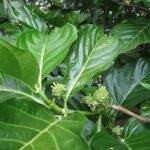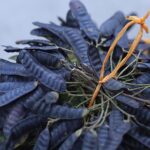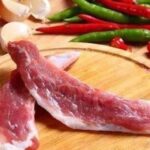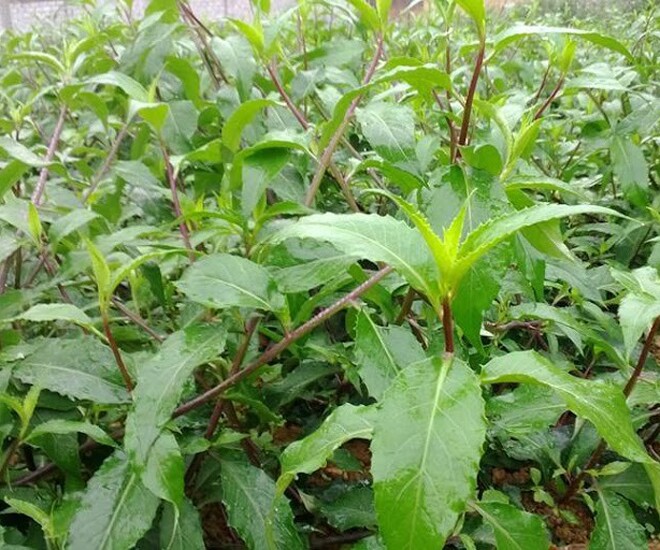
Lỗ bình, a wild vegetable, thrives in moist soil along rocky slopes or by streams. In the Northwest region of Vietnam, it is commonly found clinging to the steep cliffs of Cao Bang and Ha Giang provinces. In the Central Highlands, this vegetable can be spotted in Gia Lai, Dak Lak, and several highland districts of Lam Dong province. At first glance, lỗ bình resembles the crab claw herb [name in English] of the Mekong Delta region, with its soft, glossy leaves and crisp stems.
This vegetable is easy to cultivate and grows rapidly with rainfall, sprouting lush and tender leaves. In the past, highland residents often gathered lỗ bình to boil, make soup, or stir-fry with garlic, creating simple yet delicious and refreshing dishes. The vegetable has a mildly crisp texture with a subtle tangy taste, making it especially appealing during hot weather.
Ms. Ngoc, a local from Ha Giang, shared: “In the past, this vegetable grew abundantly, but no one paid much attention to it, and people even weeded it out to plant crops. However, in recent years, tourists have discovered its unique flavor, and now lỗ bình is sold along the national highways, with many travelers buying some to take home.”
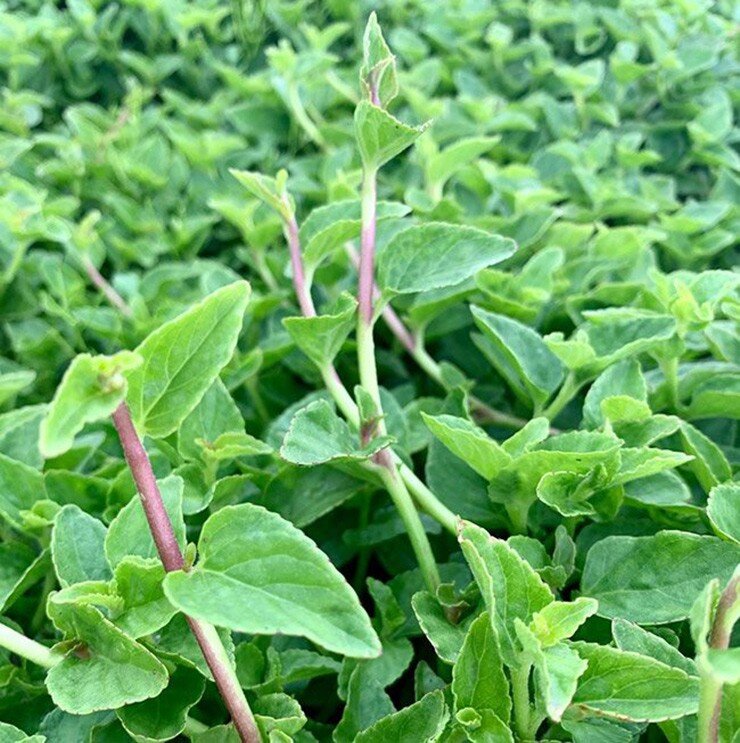
Lỗ bình has a mildly crisp texture with a subtle tangy taste, making it especially refreshing during hot weather.
Beyond its humble origins, lỗ bình has made its way into the menus of restaurants in Cao Bang and Lam Dong provinces. Dishes such as garlic-stir-fried lỗ bình, wild herb salad, bánh xèo (Vietnamese savory pancake) with lỗ bình, chicken hot pot with forest herbs, and kho quẹt (a type of Vietnamese dip) with boiled lỗ bình have become favorites among diners. Despite the more sophisticated preparations, the vegetable retains its rustic and refreshing qualities, evoking a sense of home and comfort.
Recognizing the economic potential of this wild vegetable, many households have boldly invested in large-scale and systematic cultivation. In Lam Dong province, Mr. Ngoc has set up a greenhouse and automated irrigation system for growing lỗ bình on a large scale. He shared: “This vegetable is easy to cultivate and rarely affected by pests and diseases. It only requires sufficient water to thrive.” Currently, Mr. Ngoc’s lỗ bình is supplied to numerous restaurants in Bao Loc and Da Lat cities at stable prices, reaching up to 120,000 VND/kg at times.
Lỗ bình can be consumed raw or cooked in various mouthwatering dishes. Beyond its culinary appeal, this vegetable is also recognized in traditional medicine for its therapeutic properties in treating sore throat, chronic bronchitis, rheumatism, and joint pain.

During the season, many online vendors offer lỗ bình for sale. Ms. Lan, a resident of Ho Chi Minh City, shared: “When lỗ bình first appeared, not many people knew about it, but now it has become a popular item. Some people even order a few kilograms to stock up. This wild vegetable can be stir-fried, boiled, or added to hot pots, and it tastes delicious and unique in every dish.”
“The Wild-Grown Fruit of Vietnam: Nature’s Health Secret, Valued at a Premium in China”
The humble fruit, a familiar sight to Vietnamese locals, has caught the eye of Chinese buyers who are willing to pay a premium. Commonly known as the Chinese pistache or the foxtail tree, the humble bô kết has a host of surprising health benefits and hair-nourishing properties that have captured the attention of many.
The Ultimate Pork Delicacy: A Treasure Trove of Health Benefits
Pork is a culinary treasure trove, and two parts of the pig are particularly prized. These cuts are revered for their nutritional benefits, often compared to the revered ginseng and bird’s nest. They are considered a rare delicacy, sought after by early risers at the market, as they offer a plethora of health advantages.

























